COMIC ART PROPAGANDA - A Graphic History by Fredrik Strömberg, St. Martin's Press, 2010, 176 Pages, Full Color
WEIRDO NOIR - Gothic and Dark Lowbrow Art by Matt Dukes Jordan, Chronicle Books, 2010, 192 Pages, Full Color
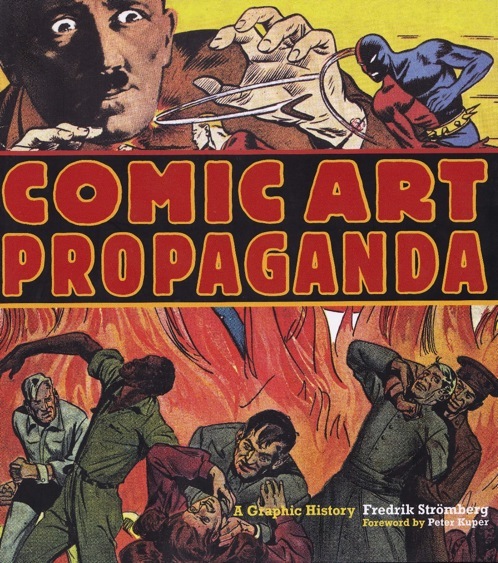
COMIC ART PROPAGANDA Following three images courtesy of St. Martin's Press.
If one art form has the power to seduce, shame or otherwise influence us into behaving a certain way, what does that say about art in general? In Comic Art Propaganda, author Fredrik Strömberg surveys almost a century's worth of attempts to use comics as a method of instructing and inculcating various populations. Stromberg's totally neutral tone will likely humble readers of all stripes at some point, as patriotic themes (such as the character Captain America) are balanced with comic books romanticizing comrade Che as a young Ernestino.

Comic Artist Al Hartley, best known for "The Archies," produced a series of Christian conversion biography comics, this one of Maria Anne "Hansi" Hirschmann, who gave her life to Christ after having been an admirer of the Third Reich in her youth.
Name a polemic of the last century and it will have its own advocacy, if not on the editorial pages of newspapers then quite likely in their funny pages. While it is easy to spot the anti-drug propaganda in comics stretching back to the 1960s, the author dryly looks at counterculture underground comic icons such as the Fabulous Furry Freak Brothers as pro-drug propaganda. Comics were used to mock and defame the Nazis to young American audiences and to extol their virtues to the Hitler Youth.
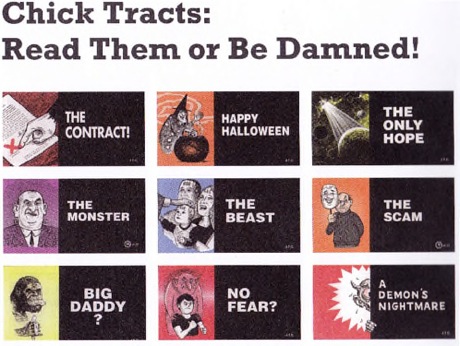
Zealous proselytizing is guaranteed in one of many Chick Tracts, published since 1970.
The book covers Sex, Drugs, Race, Politics, War and Religion. Strömberg's historic overviews of each subject and encyclopedic knowledge make for a breezy, informative read, but the shrunken comic panels throughout are frustrating. The author makes up for it with a mountain of compelling historic trivia: Are you familiar with those bible-thumping rectangular comics (called Chick Tracts after Christian cartoonist Jack T. Chick) striking fear into the hearts of those not accepting Christ? Over half a billion Chick Tracts have been sold in their four-decade publishing history, but they have been banned as hate literature in Canada. In this definitive overview, the author deftly shows that a blunt, biased message can be softened and more easily delivered in animated form.
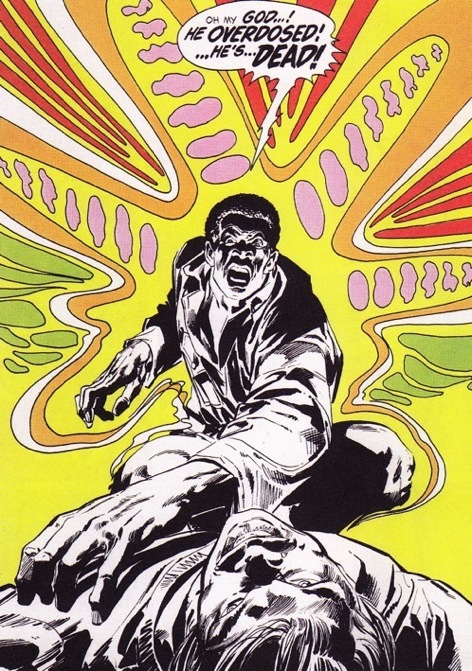
A page from an anti-drug 1971 GREEN LANTERN comic
Is the potency of overt manipulation of the viewer inherent in comics? If so, what is the message of art based on comics that is not propaganda? One could look to the latest in "LowBrow" art to ponder that question. LowBrow art is the umbrella term for artists working in the accessible pictorial space where comic books' pretense to pop art confuses surrealism as the path to an All American careerism if not downright rock stardom.

WEIRDO NOIR All Images Below courtesy CHRONICLE BOOKS.
Weirdo Noir, is the sequel to Weirdo Deluxe, an encyclopedic tome of alternative art by author Matt Dukes Jordan. Subtitled "Gothic and Dark Lowbrow Art," the tome casts a wide net in search of scary illustrations rendered interesting by a cross-section of emerging and established LowBrow artists. The inclusion of a wide swath of artistic approaches expands the definition of "gothic" to include kitschy paintings of the Munsters as well as more abject presentations that might challenge the squeamish, always with the lowbrow trademarks of hot chicks and cartoon surreality.
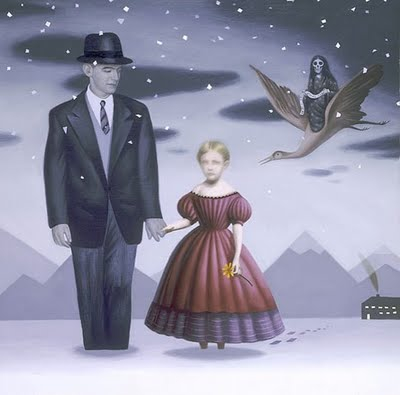
Artist: ALEX GROSS, Departure (2001)
Instead of casting a curatorial or critical eye at what might constitute "dark and gothic," Jordan presents Lowbrow's eerie side as a "genre within a genre," delivering a catalog of the emerging and established names in Lowbrow who have been producing work in a "gothic" vein. The book has a set structure, asking each artist the same series of questions and while very little of note gets discussed, the pictures are the thing and there are hundreds of them here. The highlight of the book is Jordan's reworking of a millennia-plus timeline to chronicle the ebb and flow of noirish themes through Jordan's "Dark Art History."

Artist: ISABEL SAMARAS, Venus (Morticia) (2002)
I could list my favorites or bash some inclusions of less than worthy LowBrow artists, but the LowBrow movement is the subtlest and surest propaganda for mercantilism that has ever teamed with art. Yes, capitalism's ugly lovable cousin, mercantilism triumphs in LowBrow, where every artist has a signature style that is established and then mined for as much product as possible. Critiquing much of this art is like rationalizing why one purchases a rectangular bottle of purple shampoo instead of oval tube of aquamarine hair cleanser. Jordan takes his subjects seriously and the fact that Noir is a rich subcategory within LowBrow bodes well for a few more sequels ahead in this series, unwitting propaganda of self-employment for those who can master a signature style.
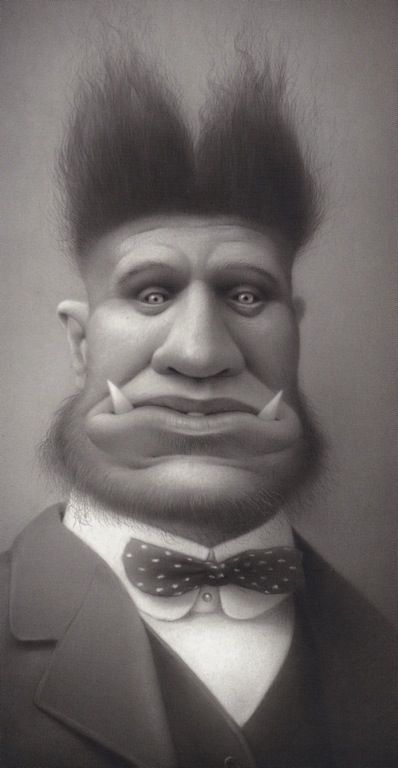
Artist: TRAVIS LOUIE, Sad Mr. Grimace (2008)
(Full Disclosure: I have edited and published a few essays over the years by Matt Dukes Jordan in my magazine, Coagula. But his publisher sent me a review copy independent of his efforts - in fact, Matt was shocked to hear the book had been printed and drove down to my place to see my copy a full month before he got his hands on his very own.)
